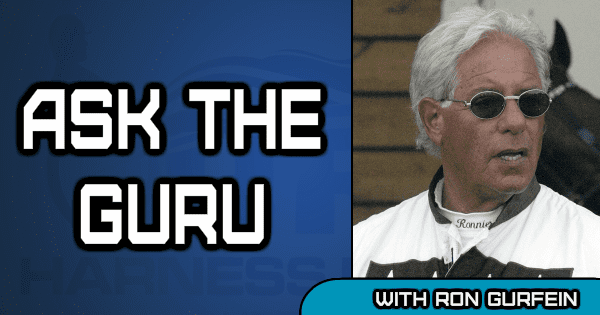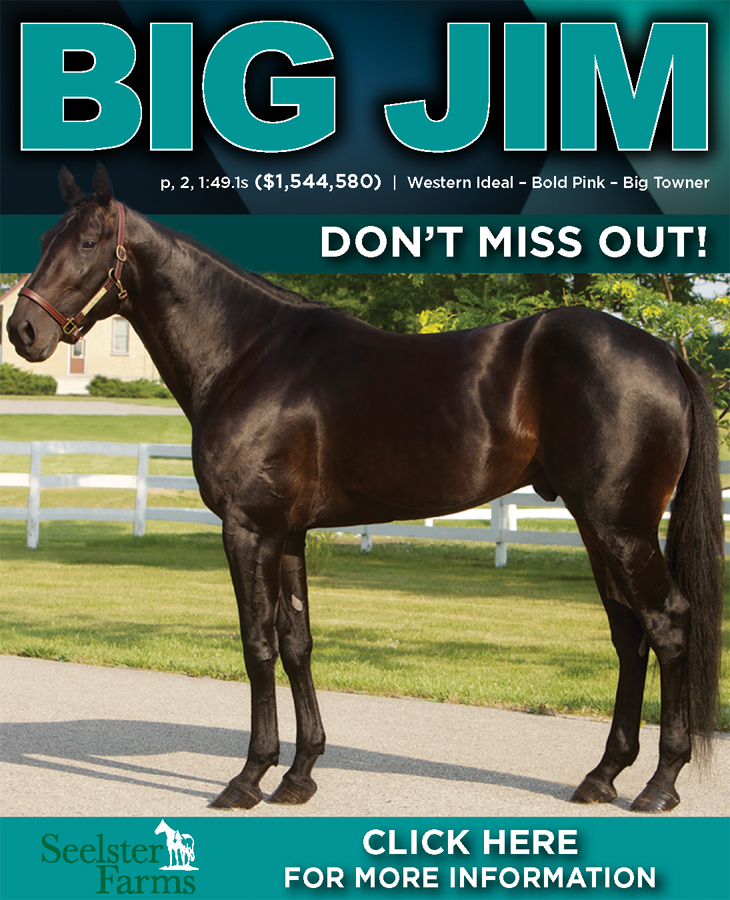

Growing up in NYC, one thing I would do over and how to know which horses are stakes worthy
by Ron Gurfein
My thoughts and prayers go out to my dear friends Matt Kakaley and Annie Larrabee. Matt was involved in a horrific accident at Yonkers on Tuesday night, and sustained some serious injuries. Matty, get well soon. Annie and the baby need you, and the sport needs you, as well.
On a personal note, this week has started with wonderful news. My daughter Lauren gave birth at 3 a.m. Monday to Oliver Zumbi Ferreira Cardoso a seven-and-a-half pound beautiful baby boy, my second grandson in a four-month period. The first was also my son Blake’s first child, Lucas Dean Gurfein. Oddly enough, they were both born on the 12th — Oliver in March and Lucas in November. Lauren’s husband, Cauam, and Blake’s wife, Elizabeth, are all doing well.
Now to the question at hand from my friend and editor Dave Briggs: What was the best thing and the worst thing about growing up in New York City?
On the morning of Oct. 30, 1940 Ronald Stuart Gurfein entered the world at Woman Hospital on Fifth Avenue and 112th Street. To be perfectly honest, there was little that went wrong from there.
All areas have culture, it appears in various forms, but few places have a total lack of it. Some place are flooded with culture as is New York City, Paris, London etc. Places with a lot of history and a lot of people. Just the enormity of the population in an area as small as Manhattan Island creates opportunity for a plethora of learning experiences. I am sure I could write about many that would bore you to tears so I will only include a few that the city provided me with.
I lived on Fifth Avenue on the second floor and my bedroom window looked out on the avenue and Central Park. When the war ended, there was a parade up Fifth Avenue and then General Dwight David Eisenhower went right by my window, I was five years old and was waving and totally awestruck. Just days before, my grandmother was walking me in the park and by chance she got in a conversation with a nicely dressed gentleman who turned out to be Admiral Robert Perry who discovered the South Pole. He either thought I was cute or had a crush on my grandma, because he autographed my baby picture. That photo is one of maybe four that remain in my home today.
The Audubon Society was next door to my house, the Metropolitan Museum of Art 10 blocks south, The Museum of Natural History and the Planetarium were just across the park and Public School 6, regarded still today as the finest first to eighth grade school in the country, walking distance from my front door. Add to these the Public Library, the Metropolitan Opera, the Guggenheim Museum, the Museum of Modern Art, and Broadway all walking distance. This wasn’t Kansas.
There are different modes of culture; food, as one example, rates high on my importance scale. As a child, I did eat home a lot but as I became older I ate out 100 per cent of the time. My parents divorced and I moved in with my dad in a small apartment on 62nd street and Park Avenue a wonderful neighborhood close to everything. My dad was a creature of habit, as am I. We both had a routine of places to go. There are 30,000 restaurants in Manhattan, but we would eat at four. Drinks at the Sherry Netherlands bar at 4:30. Today, it is restaurant Chipriani. Then dinner at Dino’s, Valois, Voisin, or Le Cirque. Once in a while, he would break up the sequence with a visit to a local deli like the Stage or The Madison.
Although you walk most places in the city when I was a kid, we had a bicycle club that met every Saturday morning and we would either bike to Wall Street and take a ride on the ferry or go north to the Cloisters for a magnificent view of the Hudson, once again not Kansas.
I am not trying to demean other places just point out the vast opportunity that the city affords you. I lived happily in upstate New York where my kids grew up and they got a more earthy culture not available in New York — swimming, horses, and skiing (downhill racing), boating, etc.; all things not available in the city.
Opportunity abounds and the closeness of everything and everyone opens doors, I had a school buddy Fred Fox, his father did the musical arrangement for the Sid Ceaser Show of Shows with Imogene Coca and I was periodically invited to see the show live. The cameras were so large in those days you couldn’t see very much, but is was exciting meeting all the stars. Speaking of which, my dad had a custom tailoring shop on Madison Avenue and he made most of the clothes for the Rat Pack. One horribly rainy night, my wife and I came out of a Broadway show and it was impossible to find a cab. We were standing on the corner of 6th Avenue and 45th street a few feet from the famed Peppermint Lounge, in the downpour and a limousine pulls up, Sammy Davis sticks his head out and says, ‘Ronnie get in the car.’ We enter the limo to find Sammy and his wife Mai Britt (gorgeous) drinking champagne welcoming us like we were old friends. My wife was awestruck. Not in Ohio.
As recently as 10 years ago on a Monday night, my wife and I sat at a table in Balthazar and a few minutes later Ellen Degeneres and Anne Heche sat down next to us. The next night we are dining at Nello and then minutes later the same two sit down. Not Ohio.
What can I fault with growing up in New York, only that it spoils you. With the exception of Paris and maybe Milan there is no place comparable. I could fault the traffic, but it’s almost as bad in Boca Raton today.
The kids I went to school with ended up famous doctors, attorneys (my best friend Eric Kronfeld was the lawyer for The Rolling Stones for 20 years.
I attended The Bronx High School Of Science and only God knows the amount of genius that flowed from those hallways. It’s been a marvelous ride and the moral of the story is if you have the opportunity to raise your kids in Manhattan, do it.
There have been other city boys in the standardbred business — Andy Grant, Charlie Karp, Jeff Gural, who was my neighbor for a while, and Mike Kimmelman, along with David Sharf, Bobbi Boni and the baron of Pine Hollow Stud Morton Finder. I would be remiss if I didn’t mention Michal Klau of Muscle Hill fame, and I can’t leave out the newbie to the group Murray Brown via Montreal and Hanover, PA, and his lovely wife Carol Stein.
Russell Crawford after being extremely complimentary asks: If you could do any one thing over, what would it be and what would the desired outcome?
My initial reaction was to say not marrying the first two times and then I thought that was definitely not a good answer. The first two experiences into the world of holy matrimony were not great, but fun, and in their own way, rewarding. Instead, I will give a more horse-related answer.
Once again the answer involves my good friend Frank “the elder” Antonacci.
It was the first Sunday in August, 1991. Frank and I were standing in front of MB Felty’s stall. This was the colt that finished second in the Hambletonian the day before. He was laying down, listless, with his head hanging. Frank turned to me and said he looks dead tired, let’s turn him out for a week. I said, ‘Great idea,’ but in the back of my mind I knew it was not a great idea because sometimes when you change the schedule on a racehorse it can backfire.
Sure enough, the colt was out for a half-hour, got hung up in a fence and was never the same colt. He was too sore for the World Trotting Derby, The Kentucky Futurity and the Breeders Crown. Major disappointment.
Experience Victory, the $650,000 colt, was the same scenario. He was racing really well and one day I said to Emma, his caretaker, ‘He looks tired to me,’ so we turned him out at Brittany Farm for a week. When he returned to the barn he was a totally different horse, so mean he tried to kick Emma’s head off, and pulling so hard I had to put a snake bit in his mouth. Week after week he got worse flipping a palate, and noisy as hell. He went from being the perfect colt to an unmanageable, choking, beast.
I am not going to tell you don’t be kind to animals. That would be ridiculous. However, breaking the routine of a top racehorse can bite you in the butt.
If I didn’t go out of the way to give extra time to those horses, they may have been names we would talk about today.
Joel Kravet asks: When should a trainer know or start to realize which of his colts are stake worthy and which he can cull to smaller horizons? I realize that it’s hard as some horses find themselves late in training.
When dealing with pacing horses, this is far more difficult than trotters. With pacing horses going great on March 15, go with pedigree that seems to me to be a great filter. Trotters on the other hand are a totally different story. The great ones show up in December, by January you are saving their speed to such an extent that you always feel you have 20 seconds in reserve after you training miles. That’s five seconds per quarter, and is quite meaningful.
If you have trained great horses you know what they feel like. Experience will make it easier as time goes on.
I do however have a method that will definitely work. Although not foolproof — nothing is — it will help young trainers a lot. Train your colt a good quarter without carrying a watch, and have some one timing you. If you think you went a quarter in 30 seconds and you were timed in 36 the colt is working too hard and most likely not a candidate for a successful two-year-old campaign. If you think the colt went a quarter in 36 seconds and he actually went 30 seconds you have the makings of a good horse that gets over the ground with little effort.
Don’t get me wrong I am not saying that pedigree is not important in trotters I just feel it is of less importance than with the pacing horse.
Thanks again to all my readers for your wonderful feedback. Next week, the key question from Susan Fuller is what younger horseman in the game today reminds you most of yourself and why?
Have a question for The Guru? Email him at GurfTrot@aol.com.















